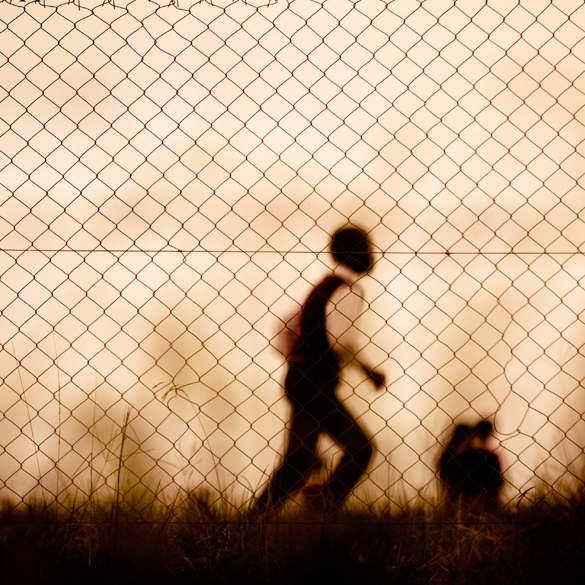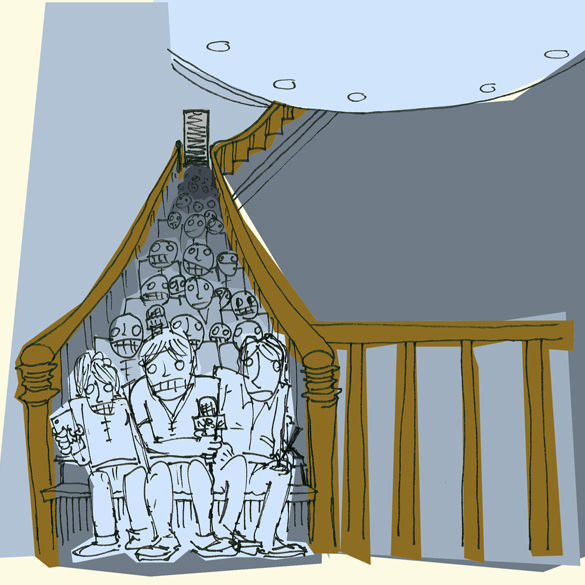“How can you thank a man for giving you what’s already yours? How then can you thank him for giving you only part of what’s already yours? You haven’t even made progress, if what’s being given to you, you should have had already. That’s no progress.” – Malcolm X, 1964
In 1964, the United States was in the throes of racial conflict. Civil rights activists were leading black Americans and their white allies in a struggle against institutionalized racism, segregation, and disenfranchisement. The situation was bleak, activists were being murdered, the government seemed deadlocked on the issue, and many were losing hope. However, the passage of the Civil Rights Act and the Voting Rights Act set the stage for a positive transformation in race relations in a country that had been plagued by racial tension since its inception.
We have yet to live up to that hoped-for transformation. Almost 50 years later, despite having made demonstrable progress on the race issue, the idea that we live in a “post-racial” society is simply a myth—a myth that was given a boost last week when the U.S. Supreme Court invalidated Section 4 of the Voting Rights Act, legislation enacted during the Civil Rights Era which was critical to the enfranchisement of black Americans living in the Jim Crow South. Writing for the majority, Chief Justice Roberts claimed that times had changed since the 1960s, and the section of the law requiring historically racist sections of the country to have changes to their elections laws vetted by the federal government was anachronistic.
Superficially, Roberts’ claims ring true. Obviously Americans have made great strides in confronting issues of race since the 1960s. De jure segregation has been eliminated, minority groups have greater access to essential goods and services, and we have seen what many thought would never happen, the election of a black man to the office of the presidency.
Yet looking past the veil of progress which clouds the vision of well-meaning people who believe the issue of racism has been solved, we can easily see that there are many policies and practices in America which perpetuate the inequality of races. The following is a brief rundown of the many fronts on which America continues to fail to live up to its “post-racial” ideal.
The criminal justice system. The starkest example of racial discrimination in America today is the treatment of blacks and other minorities in the criminal justice system. The statistics are astounding. Consider that:
- There are more blacks in the corrections system today – whether in prison or on probation or parole – than were enslaved in 1850.
- People of color account for 30% of the total population in America, yet comprise 60% of the prison population.
- Blacks that commit federal crimes on average receive sentences that are ten percent longer than their white counterparts.
- One in three black men will see the inside of a prison in his lifetime.
- Blacks and Hispanics are much more likely to face interaction with police officers, are three times as likely to be searched during a traffic stop, and four times as likely to be the target of the use of police force.
War on drugs. A good deal of the disproportionate impact of the corrections system on blacks and other minorities is due to the government’s relentless, fruitless pursuit known as the Drug War. Consider that:
- Only 14 percent of drug users are black, but blacks constitute 37 percent of those arrested for drug crimes.
- Blacks make up 50% of state and local inmates imprisoned for drug crimes.
- Black youth are ten times as likely as their white counterparts to be arrested for drug crimes, despite the fact that whites are more likely to abuse drugs.
Then you have the proliferation of SWAT team raids used to enforce drug laws and execute search warrants, sometimes resulting in the deaths of innocent people like Jose Guerena and Aiyana Jones—both of whom were “brown skinned.”
Stop and frisk. The New York Police Department’s infamous stop and frisk policy, which involves beat cops targeting citizens going about their daily business for pat downs and interrogations, is primarily directed toward black and Latino citizens. The number of stop and frisks occurring on the streets of New York has exploded in the past ten years, jumping from 97,000 in 2002 to nearly 686,000 in 2011. Of all of those stops, only two percent result in uncovering an illegal weapon.
Of all the stop and frisks occurring in 2012, over 86 percent involved African-Americans or Latinos. Even in precincts with the lowest percentage of minority residents, blacks and Latinos still made up more than 70 percent of all stops. Despite targeting minorities, a stop conducted against a white person was more likely to uncover an illegal weapon or contraband than stopping a black or Latino person.
Education. Even in the realm of education, one of the first battlegrounds where civil rights activists were victorious, segregation and inequality continue to rear their heads in the 21st century. Indeed, as judicial oversight of school systems has waned in the years since Brown v. Board of Education, schools have become increasingly segregated.
Some researchers have suggested that American public schools are more segregated now than they were in the 1960s. A report released in September 2012 by the Civil Rights Project at UCLA reported a number of troubling trends and statistics, including the fact that “fifteen percent of black students and 14 percent of Latino students attend ‘apartheid schools’ across the nation in which whites make up zero to 1 percent of the enrollment.”
In addition to being segregated, students of color are much more likely to be punished, and punished more severely than their white peers. During the 2009-10 school year, 96,000 students were arrested and 242,000 referred to law enforcement officials. Of those students, more than 70 percent were black or Hispanic.
The right to vote. To bring it back to where we started, the Supreme Court’s assertion that the issue of universal suffrage has been solved, even in the most historically racist sections of the country, is simply false.
Due to felon disenfranchisement, one in thirteen African-Americans cannot vote. In some states, such as Virginia, that number rises to one in five. As of 2004, more black men were disenfranchised than in 1870, the year the Fifteenth Amendment, which bars racial discrimination at the voting booth, was ratified.
In the wake of the Supreme Court’s decision in Shelby County v. Holder, these disparities will only get worse. While the Voter ID laws which states attempted to implement prior to the 2012 elections were largely blocked due to federal oversight and judicial appeals, the Supreme Court has just done away with any major impediment to these attempts to purge legitimate voters from the rolls in a disingenuous attempt to protect the integrity of elections.
Indeed, attempting to purge voter rolls based upon specious accusations of voter fraud is now the predominant method of discouraging or preventing minorities from voting. Reducing the number of polling places and cutting polling place hours is another tried and true method, and we will only see more attempts as the results of the Supreme Court’s decision play out.
Arguing for Shelby County before the U.S. Supreme Court, attorney Bert Rein referred to racism as an “old disease” and claimed that “that disease is cured. That problem is solved.” What has been solved is not the issue of racism, but a public relations issue. Racism is still alive and well in America; it has simply taken on a more insidious character, and doesn’t feature the bigoted rants of the Dixiecrats of old. Instead it manifests itself in the public schools, the criminal justice system, the electoral process, and elsewhere, under the veil of seemingly colorblind policies which still tend to target those who have been historically disadvantaged in this country.
As Michelle Alexander explains in her book The New Jim Crow: Mass Incarceration in the Age of Colorblindness, which explains how America’s so-called War on Drugs has been a vehicle for reinstituting some of the most egregious policies of the Jim Crow era, we may have changed the face of America, but underneath we still operate much the same as we always have.
What has changed since the collapse of Jim Crow has less to do with the basic structure of our society than with the language we use to justify it. In the era of colorblindness, it is no longer socially permissible to use race, explicitly, as a justification for discrimination, exclusion, and social contempt.
So we don’t. Rather than rely on race, we use our criminal justice system to label people of color ‘criminals’ and then engage in all the practices we supposedly left behind. Today it is perfectly legal to discriminate against criminals in nearly all the ways that it was once legal to discriminate against African Americans. Once you’re labeled a felon, the old forms of discrimination–employment discrimination, housing discrimination, denial of the right to vote, denial of educational opportunity, denial of food stamps and other public benefits, and exclusion from jury service–are suddenly legal. As a criminal, you have scarcely more rights, and arguably less respect, than a black man living in Alabama at the height of Jim Crow. We have not ended racial caste in America; we have merely redesigned it.

